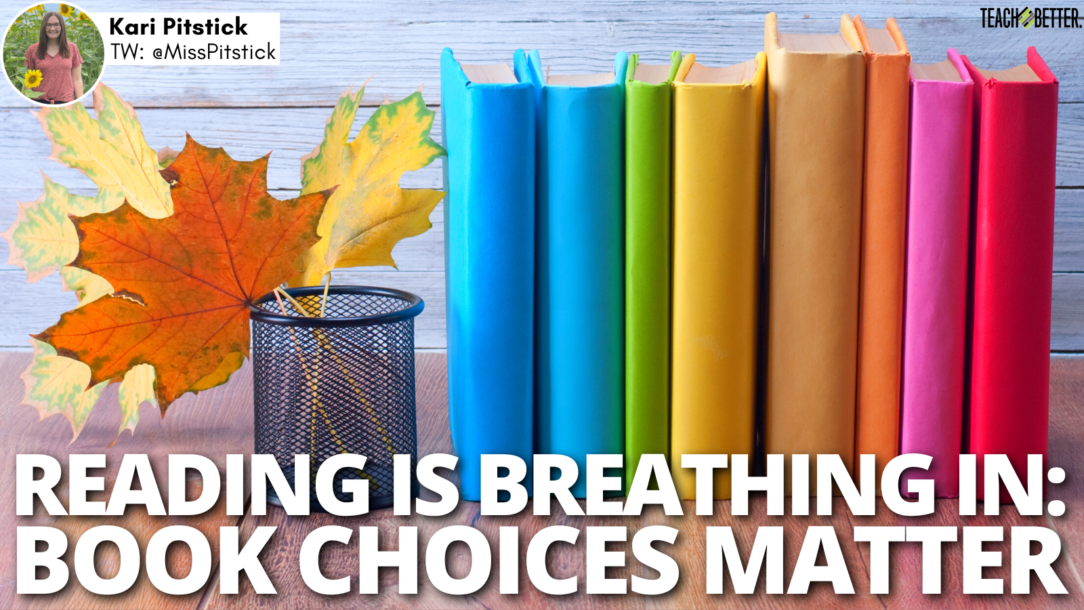TL;DR:
- The post uses an analogy of weightlifting to explain the importance of choosing different levels of books.
- It categorizes books into painless (easy), on-target (comfortable), and challenging (difficult) levels, emphasizing the need to vary one’s reading choices to grow as a reader.
- Encourages students to primarily read on-target books but also occasionally challenge themselves with more difficult material while still prioritizing enjoyment in reading.
“Reading is breathing in. Writing is breathing out.”
One of my favorite parts about being a middle school ELA teacher is trying to help my students find a love for reading. Part of sharing that love is also making sure they know why it’s important to read for fun and knowing how their book choices matter.
Each year when we are establishing independent reading routines in my classroom, I always share an analogy with students to help them understand the importance of choosing different levels of books. And before we get any further, I should clarify I’m not talking about specific reading levels or Lexile levels.
I refer to three general categories:
- Painless: easy-to-read books that don’t require much thought
- On-target: books that feel just right for students; they can understand what is going on and may have some unfamiliar words, but overall feel comfortable
- Challenging: books that feel challenging to read. These books may have unfamiliar words, difficult-to-follow content or storylines, etc.
After reviewing these levels with students, I deliver my analogy about reading and weightlifting.
I love using a good analogy to help students understand why we do certain things in class. I believe it helps students better grasp a concept that might otherwise be difficult to understand.
My analogy for reading and weightlifting goes like this: I tell students I’d like to go to the gym daily and lift weights to get stronger. I tell them I am capable of lifting 10-pound weights. I ask: On an average day, what advice would you give me for lifting weights if I want to become stronger?
Students will often say something along the lines of: Lift the 10-pound weights but sometimes choose 15-pound weights to get stronger.
I then ask them, what if I previously did something that made my arm muscles incredibly sore but I still want to work out? Some students may say you can choose cardio or something else entirely, but I try to get them on the path of thinking what I would do if I still wanted to lift weights. They may then say that I could lift the 5-pound weights that day.
I then connect this to reading. In order to enjoy reading and get out of it what I need to, I will read on-target books. I’ll lift those on-target weights.
But to become physically stronger, I sometimes need to lift heavier weights. Just as I sometimes need to read challenging books.
And sometimes I may not be feeling my best and need to lift weights that are below what I’m capable of. Sometimes I may want to read books that are below my level simply because I enjoy them. But if I live in that world, I won’t become better or stronger.
As we go through the year, I constantly try to remind students of analogy. Read the on-target books. Challenging books can be great too. Painless books are ok but not all the time. I want students to prioritize reading for enjoyment while still making choices that allow them to grow as a reader and as a learner.
All of this said, you know your own students best. I have found this process to work well with my middle school students. If you have younger students, you may find you need to level your classroom library books to help your students make these choices, and that is totally ok!
[scroll down to keep reading]If you want to check out my past posts on similar topics, check them out here:
About Kari Pitstick
Kari Pitstick is a 7th grade English Language Arts teacher and track & field coach in Illinois. She’s also the Director of Digital Content for the Teach Better Team. She graduated from Illinois State University in 2015 with a bachelor’s in Middle Level Education, and American College of Education in 2018 with a master’s in Curriculum & Instruction.
She knew she wanted to teach at the middle level since she was in middle school herself. One of her main missions is to provide a safe and friendly environment for students to explore their passions as learners and as people.
Kari is an avid reader, spending most of her free time reading and writing, and she hopes to share that passion with all those around her—students and adults, alike!




